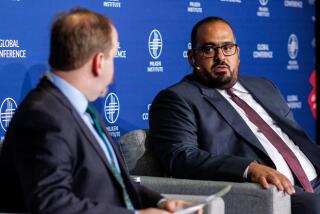Aramco starts IPO with prince’s economic vision at stake
Saudi Arabia is pulling out all the stops to ensure the success of Aramco’s initial public offering after Crown Prince Mohammed bin Salman finally decided to offer shares in the world’s largest oil producer.
The kingdom cut taxes on the company for a third time, revealed incentives for investors not to sell and is considering boosting dividends further. Yet the Saudi government has already conceded the company probably isn’t worth the $2-trillion valuation Mohammed has long advocated.
More than three years after the IPO was first mooted, Aramco published a so-called intention to float Sunday, the most dramatic change to the Saudi oil industry since the company was nationalized in the 1970s. The IPO is a cornerstone of Mohammed’s Vision 2030 plan to make the Saudi economy ready for the post-oil era.
Saudi Arabia is aiming for a valuation of $1.6 trillion to $1.8 trillion, according to people familiar with the matter. Analysts at banks working on the deal offered wildly diverging estimates: Goldman Sachs Group Inc. told investors Aramco is worth $1.6 trillion to $2.3 trillion. Bank of America Corp., another top bank on the deal, had the bottom of its range at just $1.2 trillion. BNP Paribas gave an estimate of $1.42 trillion.
With Aramco employing more than 20 banks on its IPO, investors have few options for truly independent research. Still, a few outfits have started publishing their estimates. Sanford C. Bernstein & Co., for example, said fair value is $1.2 trillion to $1.5 trillion, well below what the banks working on the IPO have projected.
“This is the right time for us,” Chairman Yasir Rumayyan said at a news conference at Aramco’s headquarters in the eastern city of Dhahran on Sunday.
Aramco’s net income last year of $111 billion made it the most profitable of any corporation — more than Apple Inc., Google’s parent Alphabet Inc. and Exxon Mobil Corp. combined. But the company has pledged to pay a minimum of $75 billion in dividends, leaving it vulnerable to a downturn in oil prices.
Most of the banks’ valuations are based on oil prices staying above $60 a barrel and assume Aramco will be able to raise oil production by 2021. Almost every bank assumes Aramco will need to take debt this year and next year to cover spending and dividend payments. JPMorgan Chase & Co. published a 118-page report without offering a valuation, but called Aramco the first “mega-major” oil company. UBS Group also didn’t give a valuation in its report.
To boost investor appetite, Aramco said it will pay an income tax rate of 20% on its domestic downstream business starting next year, compared with current levies of 50% to 80%.
In addition to already announced changes in royalty payments, the government has also exempted condensate — a light oil produced in conjunction with natural gas — from the tax until 2033. Those measures would have boosted free cash flow by $4.5 billion in the first six months of this year, the company said in the intention to float document.
Saudi retail investors will be eligible to receive one share for every 10 allotted shares if they continuously hold the shares for 180 days from the first date of trading and listing, Aramco said.
Aramco earned net income of $68 billion and generated $244 billion in revenue and income related to sales in the first nine months of the year, it said in a statement. It expects capital expenditures of $35 billion to $40 billion next year, rising to $40 billion to $45 billion in 2021.
To get the deal done, bankers will need hefty contributions from the kingdom’s richest families, many of whom may have been targeted during a declared corruption crackdown in 2017 when scores of wealthy Saudis were held in Riyadh’s Ritz-Carlton Hotel.
Martin, Blas and Narayanan write for Bloomberg.
More to Read
Inside the business of entertainment
The Wide Shot brings you news, analysis and insights on everything from streaming wars to production — and what it all means for the future.
You may occasionally receive promotional content from the Los Angeles Times.









